New CPUs In 2023: Current Market Status
It is crucial to be up-to-date with the GPU and CPU market to get the best PC in your budget. Keeping up with GPUs is easy as there are considerably fewer SKUs than CPUs, and you won’t have to worry about compatibility issues.
Keeping up with CPUs is more complicated, considering how many SKUs are available. Intel’s 12th generation alone has dozens of SKUs. Picking the correct motherboard and RAM is another factor that complicates things even further.
To help you stay up to date with all the new CPUs, we wrote this guide to explain the current market status in detail.
Let’s get right into it!
Table of ContentsShow
Updates +
- May 8, 2023: Added the Ryzen 7 7800X3D to the list of new CPUs.
- March 5, 2023: Added the Ryzen 9 7950X3D as the fastest gaming CPU.
- January 20, 2023: Removed i3-12100 from the list, updated Ryzen 5 5600 as newest Best Budget CPU and R5 7600 as AMD’s Best Value.
- November 1, 2022: Updated “Upcoming CPUs” and “Newly Released CPUs” segments
- October 26, 2022: Added Intel Core i9-13900K, i7-13700K, and i5-13600K to the list.
- September 30, 2022: Added Ryzen 9 7950X, Ryzen 7 7700X, Ryzen 5 7600X, and prepared for new Intel Core Raptor Lake CPUs.
- September 29, 2022: Fixed some small errors.
- August 16, 2022: Added new upcoming CPUs and a few alternative picks for the i3-12100F.
- June 14, 2022: Added more information in the Upcoming CPUs segment and fixed grammar.
- May 31, 2022: Added up-to-date data for the 5800X3D and i9-12900KS.
- April 12, 2022: Added the Ryzen 7 5800X3D as the fastest gaming CPU.
- April 9, 2022: Added the Ryzen 7 5700 as AMD’s best high-end CPU.
- April 8, 2022: Added the Ryzen 5 5600 as AMD’s best value CPU.
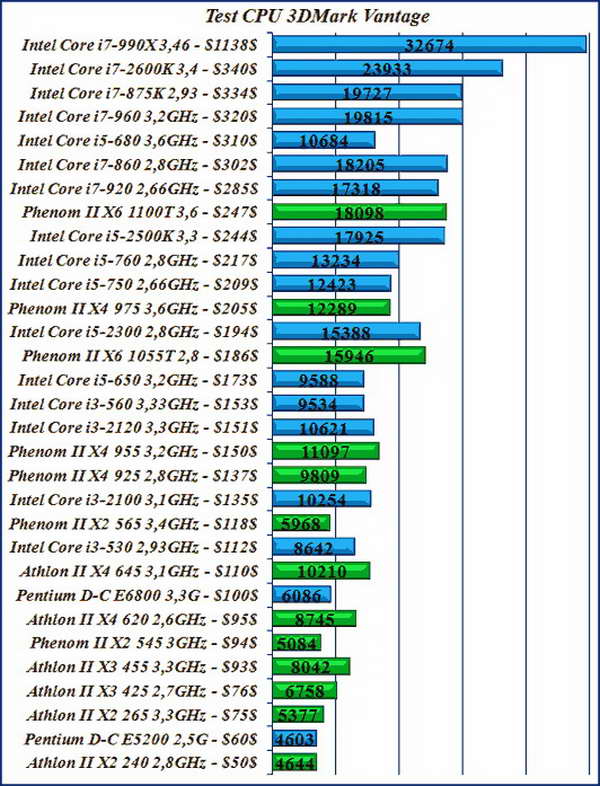
- March 16, 2022: Added AMD’s new SKUs: Ryzen 5800XD, 5700X, 5500, 4600G, 4500, and 4100 in the new “Newly released CPUs” segment.
- February 3, 2022: Minor layout fixes.
- January 25, 2022: Replaced i5-11400 with i5-12400 as the current best value CPU.
- December 16, 2021: Added Alder Lake CPUs and adjusted comparisons accordingly.
- September 13, 2021: Added new information regarding the difference in performance between the 5900X and the 5950X.
About The CPU
The Ryzen 7000X3D Series was one of the most anticipated lineups of CPUs because of how powerful 3D V-Cache was on the Ryzen 7 5800X.
The Ryzen 9 7950X3D is AMD’s flagship 3D V-Cache CPU and it is currently the fastest gaming CPU in the world.
It’s priced at $699, while the i9-13900K costs $580 and the Ryzen 9 7950X has a new price of $589.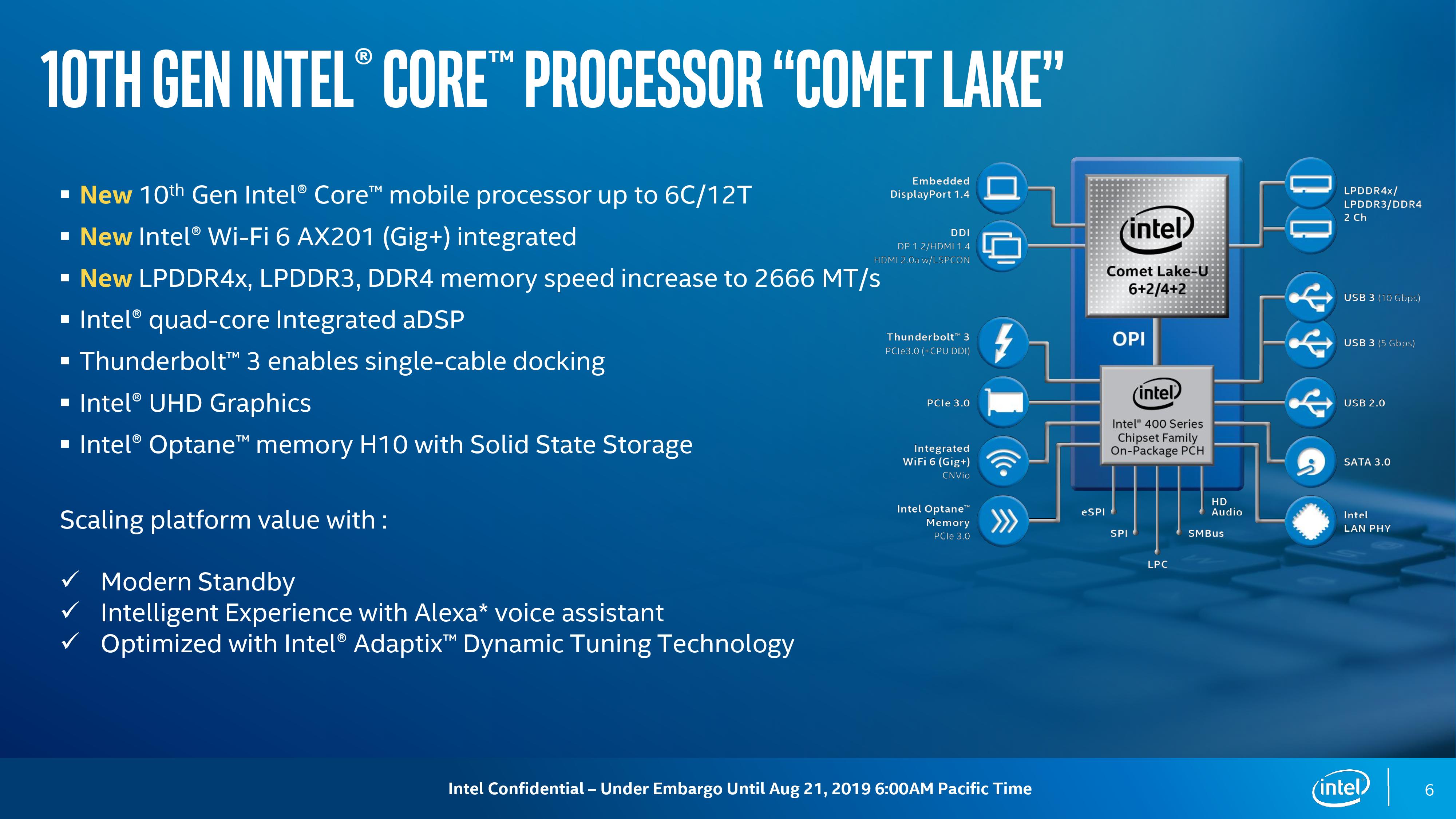 So, definitely one of the more expensive options.
So, definitely one of the more expensive options.
Performance
However, even though it was very anticipated and ended up as the fastest gaming CPU, the performance gains from the extra L3 cache didn’t prove as good as with the Ryzen 7 5800X3D.
Nevertheless, the Ryzen 9 7950X3D is incredibly fast and it tops almost any game benchmark.
Here it is against various processors:
Source: Hardware Unboxed
Note that it is only marginally faster than the cheaper i9-13900K and that the upcoming Ryzen 7 7800X3D might be the faster CPU when it releases in April of 2023.
Productivity-wise, the Ryzen 9 7950X is slightly faster than the Ryzen 9 7950X3D because certain cores are clocked lower.
It’s also worth mentioning that the Ryzen 9 7950X3D draw considerably less power than the R9 7950X and i9-13900K.
Specifications
| Base Clock | 4.2GHz |
| Max Boost Clock | 5. 7GHz 7GHz |
| Cores | 16 |
| Threads | 32 |
| Socket/Chipset | AM5 |
| L2 Cache | 16MB |
| L3 Cache | 128MB |
| TDP | 120W |
| Process | 5nm |
About The CPU
When the Ryzen 9 7950X3D was released, it took up the mantle of the fastest gaming CPU in the world, overtaking the i9-13900K.
However, this was expected to be a short run since the much cheaper Ryzen 7 7800X3D was planned to release only a few months later. And, here it is in all its glory.
For $450, it’s practically as fast as the X3D Ryzen 9, which is why it falls into this “Fastest Gaming CPU” category.
Performance
The Ryzen 9 has that extra performance for multi-threaded tasks since it has 8 more cores than the Ryzen 7 7800X3D.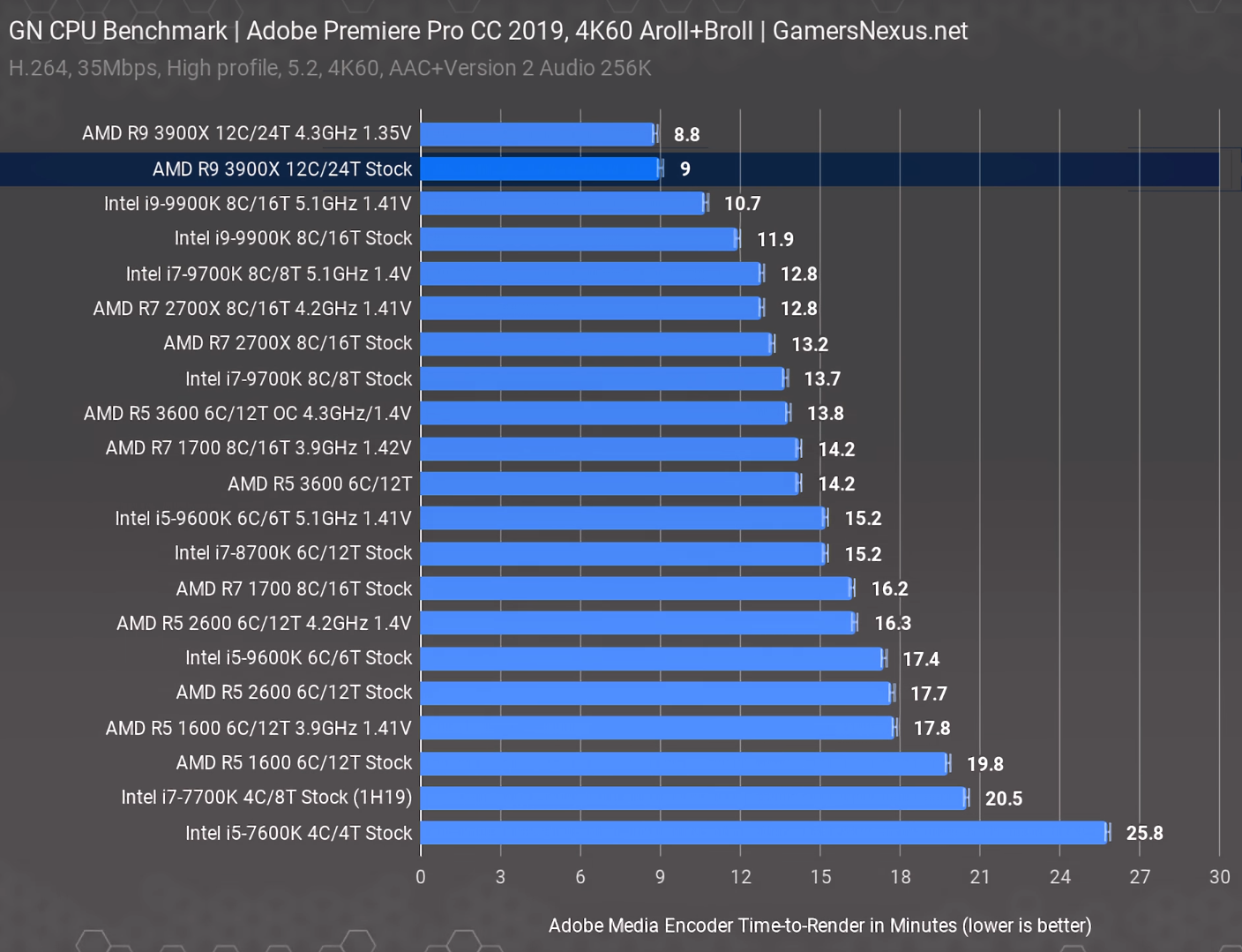
But, if you’re looking for a gaming system, you get the same gaming performance for $250 less.
Have a look at this chart:
When paired with a high GPU like the RTX 4090, the Ryzen 9 and Ryzen 7 provide almost identical performance in 12 different games including Cyberpunk 2077, Shadow of the Tomb Raider, F1 2022, and more.
But, that’s not all!
The Ryzen 7 7800X3D is also incredibly efficient, peaking at just 86W, which is significantly lower than most of the high-end Intel or AMD CPUs on the market right now.
Specifications
| Base Clock | 4.2GHz |
| Max Boost Clock | 5.0GHz |
| Cores | 8 |
| Threads | 16 |
| Socket/Chipset | AM5 |
| L2 Cache | 8MB |
| L3 Cache | 96MB |
| TDP | 120W |
| Process | 5nm |
About The CPU
The Intel Core i9-13900K was undoubtedly the fastest gaming CPU in the world, but it was recently overtaken by the Ryzen 7000X3D CPUs.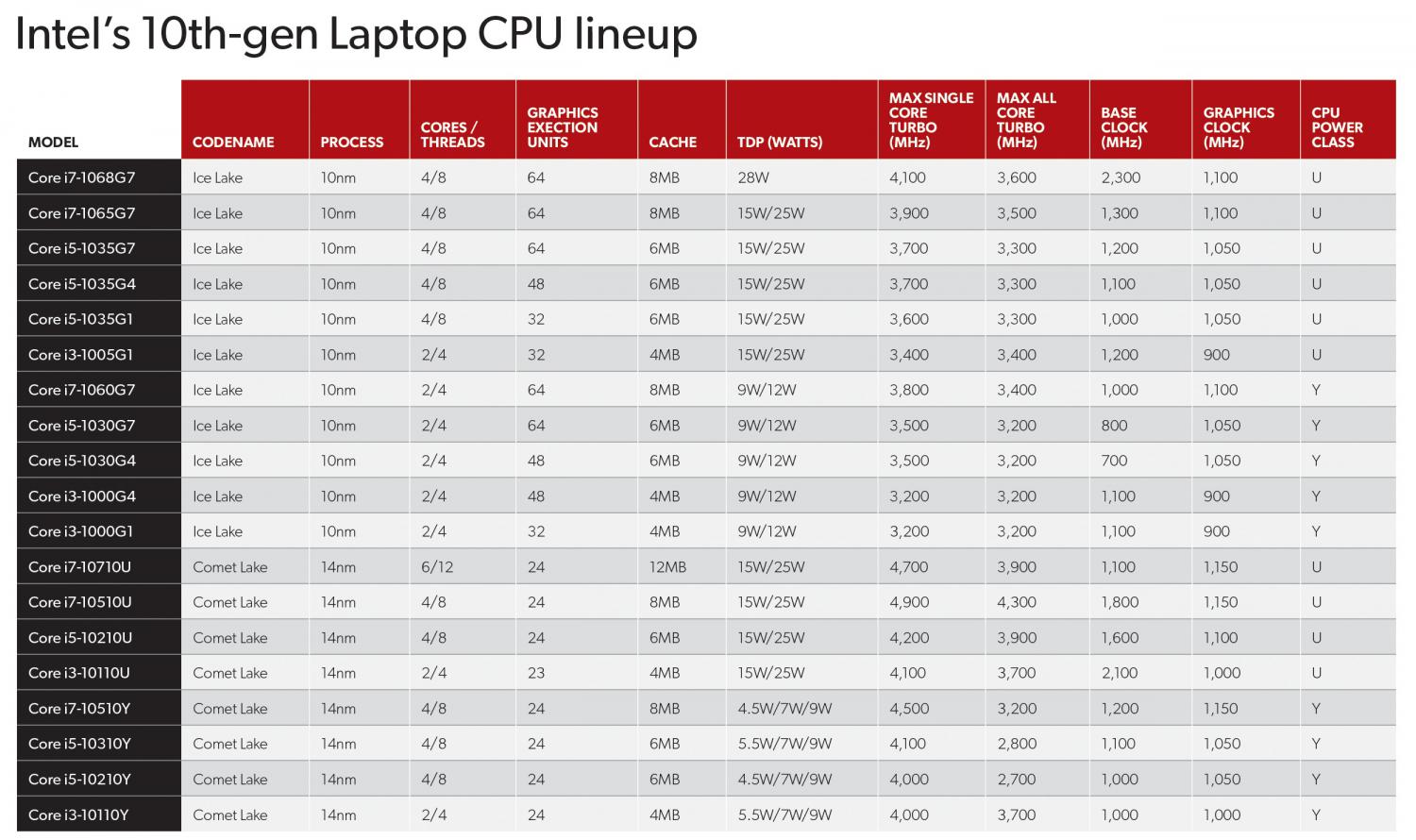
This i9 is priced at $589, putting it $289 more expensive than the 7700X, but it is also about $110 cheaper than AMD’s flagship Ryzen 9 7950X3D. It’s also $10-$20 cheaper than the R9 7900X3D.
If you are looking to get the best of the best, the i9-13900K is up there with the top 3 CPUs.
Performance
When paired with an RTX 4090 and fast DDR5 RAM, at 1080p, the i9-13900K is one of the fastest gaming CPU in the world. It surpasses all Ryzen 7000 CPUs and the Ryzen 7 5800X3D, and losing by a small margin to the 7950X3D and 7900X3D.
Source: Hardware Unboxed
However, do note that the difference in performance is less than 5%. If any of these top 8-10 CPUs are paired with a weaker GPU, the performance difference will be even smaller.
For productivity work, the i9-13900K trades blows with the Ryzen 9 7950X even though AMD’s CPU has 16 “big” cores.
Source: Gamers Nexus
The i9-13900K comes very close to the 7950X even though Blender usually favors Ryzen CPUs.
Considering that the Ryzen is $100+ more expensive, the i9-13900K definitely seems like the better offer here for everyone.
Specifications
| Base Clock | 3.0 GHz |
| Max Boost Clock | 5.8 GHz |
| Cores | 24 |
| Threads | 32 |
| Socket/Chipset | LGA1700 |
| L2 Cache | 32MB |
| L3 Cache | 36MB |
| TDP | 125W |
| Process | 10nm Enhanced SuperFin / Intel 7 |
About The CPU
Even though the Intel i9-13900K is a beast of a CPU, holding the top of the chart, the Ryzen 7 7700X is still the second-best gaming CPU in the world for almost $300 less.
Keep in mind, though, any Ryzen 7000 CPU needs an AM5 motherboard with DDR5 RAM, which is more expensive than DDR4 RAM and motherboards.
Performance
It is still a bit early for review compilation/round-up, but current tests show the Ryzen 7 7700X averaging at the top of the gaming charts.
Here’s Hardware Unboxed’s chart of a 12-game average:
Source: Hardware Unboxed
Even though this chart is a bit older (pre-13th-gen) release, it’s still relevant. The Ryzen 7 7700X is faster than the i9-12900K, negligibly faster than the i7-13700K, and about 4% slower than the i9-13900K.
The Ryzen 7 7700X lacks in productivity work though since the i7-13700K, i9-13900K, and even the i5-13600K have more threads.
Source: Hardware Unboxed
In this Corona 1.3 benchmark, for example, the i7 stomps the Ryzen 7.
Specifications
| Base Clock | 4.5GHz |
| Max Boost Clock | 5.4GHz |
| Cores | 8 |
| Threads | 16 |
| Socket/Chipset | AM5 |
| L2 Cache | 8MB |
| L3 Cache | 32MB |
| TDP | 105W |
| Process | 5 nm |
About The CPU
The Ryzen 9 5900X and 5950X were AMD’s fastest CPUs, but once Intel took over the number one gaming CPU spot with the i9-12900K, AMD had to answer.
AMD’s answer was to 3D stack L3 cache onto the 5800X, leading to better performance. This is how we got the Ryzen 7 5800X3D, the fastest gaming CPU, together with the Intel Core i9-12900KS.
At $449, this Ryzen is around $300 cheaper than Intel’s fastest gaming CPU. But, there are some caveats.
Performance
Even though the difference in gaming performance between these high-end processors is relatively small, we understand that some people want to obtain the one at the top of the CPU hierarchy.
This 8-core and 16-thread CPU is almost identical to the Ryzen 7 5800X, with the significant difference being the L3 cache. With 3D stacking technology, the 5800X3D has 96MB of L3 cache, while its predecessor has only 32MB.
Here are a few benchmarks to show the performance gap between Intel’s flagship i9 and AMD’s new CPU king:
Benchmark source: Hardware Unboxed
Out of the 40 games tested at Hardware Unboxed, the Ryzen 7 5800X3D comes out only 1% faster than the i9-12900K. Also, expect a negligible difference with the 12900KS since it isn’t any quicker either.
Also, expect a negligible difference with the 12900KS since it isn’t any quicker either.
If you look at the review roundup we posted above, you’ll see that the Ryzen is only 1% slower than the KS.
So, as you can see, the FPS you get will mostly be the same whether you go for Intel or AMD.
However, if you are looking for a quieter, cooler, and less power-hungry system, the Ryzen 5800X3D is the clear winner because the Intel churns almost 250W.
On the other hand, the Ryzen is pretty weak at productivity work since it has eight cores and is clocked slower than the non-3D 5800X.
Source: Hardware Unboxed
Specifications
| Base Clock | 3.4GHz |
| Max Boost Clock | 4.5GHz |
| Cores | 8 |
| Threads | 16 |
| Chipset | AM4 |
| L2 Cache | 4MB |
| L3 Cache | 96MB |
| TDP | 105W |
| Process | 7nm |
About The CPU
At $409, the Intel Core i7-13700K is the best value high-end CPU, no doubt.
At the same price point ($10 more expensive) as the Ryzen 7 7700X, users get 8 more (efficiency) cores. That amounts to 24 threads, while the 7700X has just 16.
Additionally, this i7 can be paired with DDR4 motherboards and memory, which leads to a cheaper system than a Ryzen 7 7700X build.
Performance
While the i9-13900K and Ryzen 7 7700X get a “Best Gaming CPU” title, the truth is that all of the top CPUs perform quite similarly.
Intel’s new i7 is about 5% slower than the Ryzen if it is paired with DDR4 memory. When paired with DDR5, the performance gap is almost non-existant.
Source: Hardware Unboxed
For productivity tasks, the i7-13700K is an absolute beast thanks to the 16 cores and 24 threads.
Source: Hardware Unboxed
In Blender, the i7-13700K is 35% faster than the Ryzen equivalent. So, if you are looking for a CPU to game on, but also do some rendering/editing work, the i7 is the perfect choice.
Specifications
| Base Clock | 3. 4 GHz 4 GHz |
| Max Boost Clock | 5.4 GHz |
| Cores | 16 |
| Threads | 24 |
| Socket/Chipset | LGA1700 |
| L2 Cache | 24MB |
| L3 Cache | 30MB |
| TDP | 125W |
| Process | 10nm Enhanced SuperFin / Intel 7 |
About The CPU
The Ryzen 7 7600 isn’t a high-end CPU based on its price, but it can be considered as such once you factor in its performance.
It competes with contenders like the i7-13700K, Ryzen 7 7700X, and even Ryzen 7 5800X3D, so it definitely deserves a spot on this list.
To further its attractiveness, AMD put a $229 price tag on this CPU.
Performance
Source: Hardware Unboxed
In this 12-game average, this $229 CPU is only 10% slower than Intel’s $589 flagship.
It also had identical performance with the $300+ i5-13600K and Ryzen 7 5800X3D.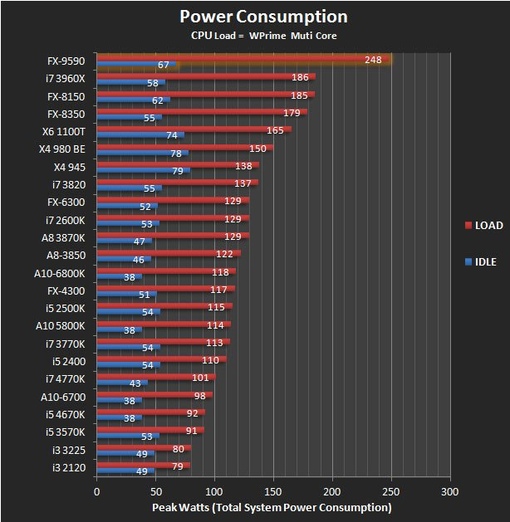
When compared to the Ryzen 5 7600X, it’s only about 4% slower. So, a very small difference while drawing considerably less power.
If you’re looking for more than gaming, you’re probably better off checking out Intel’s 12th or 13th Gen CPUs.
Still, here are some numbers:
In multi-core testing, the 7600 is comparable to the 7600X but still quite a bit slower than the i5-13600K, or even the i5-12600K.
If you prioritize gaming and productivity comes second, the 7600 may still be a good choice for a CPU.
Specifications
| Base Clock | 3.8GHz |
| Max Boost Clock | 5.1GHz |
| Cores | 6 |
| Threads | 12 |
| Socket/Chipset | AM5 |
| L2 Cache | 6MB |
| L3 Cache | 32MB |
| TDP | 65W |
| Process | 5 nm |
About The CPU
The Ryzen 5 5600X was the best six-core processor for some time, and it was AMD’s best-value CPU after being overtaken by Intel’s 12th gen CPU.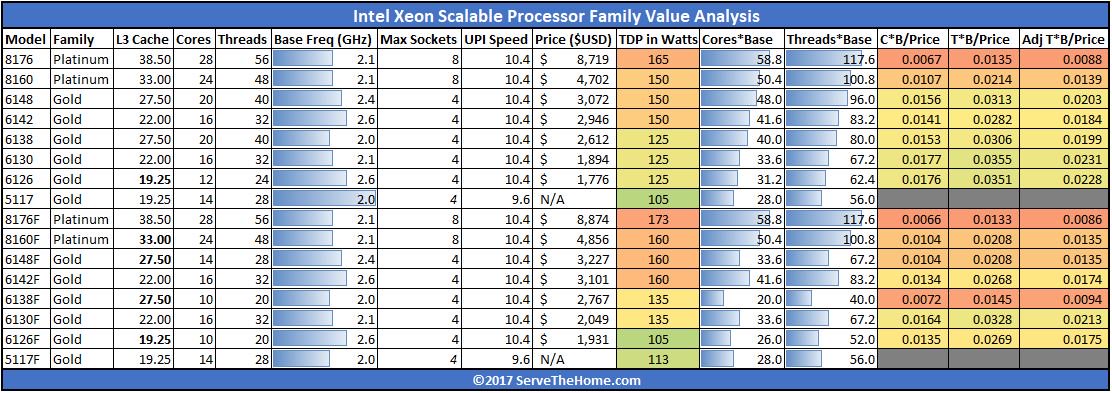
Today, AMD’s best budget six-core CPU is the Ryzen 5 5600 non-X. It’s $100 cheaper (at MSRP) than the X version, performs almost identically, and draws less power.
For less than $150, the Ryzen 5 5600 is a great choice; however, it note that the i5-12400F outperforms it and may come at a lower cost.
But if you are already on the AM4 platform, it’s a no-brainer.
Alternative Pick
The i3-12100F or i3-13100F may be a good alternative Intel option, but they will perform about 10% worse or more in games.
Performance
As mentioned previously, the top 5 or even 10 CPUs globally have no more than a 10% difference in gaming performance. That means whether you have a flagship i9 or a Ryzen 5, your gaming experience will be very similar.
Here’s a look at a 10-game average benchmark:
Source: Hardware Unboxed
We can see that the i7-12700K outputs only about 4% more FPS than the Ryzen 5600. So sure, the i7 is faster, but it is also $100+ more expensive with a far more costly platform.
Currently, getting on an AM4 platform can be very cheap. For example, you can find a good B450 board for less than $80. If you want to go an even more affordable path, there are A520 motherboards available. Just make sure you get a fast DDR4 kit.
The reality is that this CPU can handle any of today’s GPUs, including the RTX 3090 or RX 6900 XT. So there’s no real need to go for $500+ CPUs except for better multi-threading.
Like all other Ryzen 5000 Series CPUs, the 5600 has a low power draw and operates at low temperatures. With a Corsair h250i, it stays around 60C.
Specifications
| Base Clock | 3.5GHz |
| Max Boost Clock | 4.4GHz |
| Cores | 6 |
| Threads | 12 |
| Socket/Chipset | AM4 |
| L2 Cache | 3MB |
| L3 Cache | 32MB |
| TDP | 65W |
| Process | 7 nm |
About The CPU
Intel’s and AMD’s high-end CPUs are definitely appealing options, delivering some insane performance inside and outside of games.
However, realistically, most people are looking to get the most value out of their money when buying a CPU. Intel’s i5-13600K is that best-value CPU.
At $330, it is $30 more expensive than the Ryzen 5 7600X, but when considering the price of RAM and a motherboard, the Intel system can be $100 cheaper (if you go with DDR4.)
Performance
On a 12-game average, at 1080p resolution with NVIDIA’s flagship GPU, the new i5 is only about 3% slower than the Ryzen 5.
Although, if you go with DDR4 memory, the performance gap can increase to about 8% (if you have a very high-end GPU in your system.)
The Ryzen 7 7600X isn’t always so lucky though. This 20-thread CPU demolishes the 6-core Ryzen in Blender by about 25%.
Specifications
| Base Clock | 3.5GHz |
| Max Boost Clock | 5.1GHz |
| Cores | 14 |
| Threads | 20 |
| Socket/Chipset | LGA1700 |
| L2 Cache | 20MB |
| L3 Cache | 24MB |
| TDP | 125W |
| Process | 10nm Enhanced SuperFin / Intel 7 |
About The CPU
Intel’s i5-11400/F was undoubtedly the best value processor for a time. Luckily for Intel, the processor that took over that position was an Alder Lake SKU. The i5-12400 comes at just $209, while the F-edition is around $180.
Luckily for Intel, the processor that took over that position was an Alder Lake SKU. The i5-12400 comes at just $209, while the F-edition is around $180.
If you’re considering getting the newer i3-13400, we still recommend going with the i5-12400 since the performance difference is almost negligible.
AMD’s only alternative is the Ryzen 5 7600.
Performance
Far Cry 6, Hitman 3, and Shadow of the Tomb Raider place the i5-12400 in a similar performance range as the 5600X. In other, more CPU-reliant titles such as Rainbow Six Siege, CS: GO, and F1 2021, the 5600X is faster.
Overall, the 5600X is about 6% faster than the i5 but is also 50% more expensive (at MSRP). So realistically, the Ryzen has a 25% higher price tag.
In terms of power consumption, it’s pretty similar to the 5600X. For example, an i5-12400 system draws about 430W in Cyberpunk 2077, while a 5600X system draws around 450W.
Regarding heat, the i5 CPU runs much cooler using Corsair’s h250i, hitting an average of 50 degrees Celsius, which is around 10 degrees cooler than the Ryzen counterpart.
Another massive benefit to this i5 is that it is overclockable even though it is a non-K SKU (with the right motherboard). Der8auer’s overclock pushes the 12400 faster than the i9-12900K.
Specifications
| Base Clock | 2.5GHz |
| Max Boost Clock | 4.4GHz |
| Cores | 6 |
| Threads | 12 |
| Socket/Chipset | LGA1700 |
| L2 Cache | 7.5MB |
| L3 Cache | 18MB |
| TDP | 65W |
| Process | 10nm Enhanced SuperFin |
About The CPU
A title previously held by AMD’s Ryzen 9 5950X and now by the latest flagship, Ryzen 9 7950X.
This is another 16-core CPU, now priced at $700 compared to $800 for the predecessor.
The Ryzen 9 7950X is the world’s fastest productivity processor, but there’s a catch! The new Intel i9-13900K sometimes outperforms it, so the Ryzen 9 7950X barely holds on to its title of best productivity processor.
Performance
Our first look will be at productivity work.
Source: Gamers Nexus
In Gamers Nexus’ chart of Blender testing, the Ryzen 9 7950X ends up around 9% faster than the i9-13900K and just about the same increase in performance compared to its predecessor.
In code compiling, the Ryzen 9 is around 13% faster than the i9.
So, the performance gains are pretty obvious here. The 7950X also gets a win in power consumption and efficiency since the i9-13900K draws almost 300W.
Specifications
| Base Clock | 4.5GHz |
| Max Boost Clock | 5.7GHz |
| Cores | 16 |
| Threads | 32 |
| Socket/Chipset | AM5 |
| L2 Cache | 16MB |
| L3 Cache | 64MB |
| TDP | 170W |
| Process | 5nm |
Newly Released CPUs
We looked at some of the most popular, fastest, and overall best processors available on the market right now. However, there might be some new processors that didn’t end up on this list.
However, there might be some new processors that didn’t end up on this list.
To find out the latest CPUs, check out this list that provides information on their features and when they were released.
Note: Some processors on this list might not be available in retail.
| SKU | Release Date | Architecture | Cores/Threads | Base Clock | Boost Clock | L3 Cache | TDP | Price |
|---|---|---|---|---|---|---|---|---|
| Ryzen 7950X3D | April 6, 2023 | Zen 4 | 8/16 | 4.2 GHz | 5.0 GHz | 96MB | 120W | $449 |
| Ryzen 9 7950X3D | February 28, 2023 | Zen 4 | 16/32 | 4.2 GHz | 5.7 GHz | 128MB | 120W | $699 |
| Ryzen 9 7950X3D | February 28, 2023 | Zen 4 | 12/24 | 4. 4 GHz 4 GHz |
5.6 GHz | 128MB | 120W | $599 |
| Ryzen 7900 | January 14, 2023 | Zen 4 | 12/24 | 3.7 GHz | 5.4 GHz | 76MB | 65W | $429 |
| Ryzen 7700 | January 14, 2023 | Zen 4 | 8/16 | 3.8 GHz | 5.3 GHz | 40MB | 65W | $329 |
| Ryzen 7600 | January 14, 2023 | Zen 4 | 6/12 | 3.8 GHz | 5.1 GHz | 38MB | 65W | $229 |
| Intel Core i9-13900K | October 20, 2022 | Intel 7 | 8P+16E | 4.3 GHz | 5.8 GHz | 68MB | 125W | $589 |
| Intel Core i9-13900KF | October 20, 2022 | Intel 7 | 8P+16E | 4.3 GHz | 5.8 GHz | 68MB | 125W | $564 |
| Intel Core i7-13700K | October 20, 2022 | Intel 7 | 8P+8E | 4. 2 GHz 2 GHz |
5.4 GHz | 54MB | 125W | $409 |
| Intel Core i7-13700KF | October 20, 2022 | Intel 7 | 8P+8E | 4.2 GHz | 5.4 GHz | 54MB | 125W | $384 |
| Intel Core i5-13600K | October 20, 2022 | Intel 7 | 6P+8E | 3.5 GHz | 5.1 GHz | 44MB | 125W | $319 |
| Intel Core i5-13600KF | October 20, 2022 | Intel 7 | 6P+8E | 3.5 GHz | 5.1 GHz | 44MB | 65W | $294 |
Upcoming CPUs
If none of these CPUs have caught your eye and you want a more significant upgrade to your system, consider waiting for the new CPU generations, specifically AMD’s Ryzen 8000 and Intel’s 14th Gen Meteor Lake-S series.
Make sure to come back for the next big CPU series release to see the current best CPUs on the market!
Zen 4 in Second Half, Ryzen 7 5800X3D with V-Cache by Spring
One of the things I look forward to every year is whether the major companies I write about are prepared to showcase their upcoming products in advance – because the year starts with the annual CES trade show, this is the perfect place. A company that’s able to present its 12-month portfolio comes across as confident in its ability to deliver, and it also gets the rest of us salivating at the prospect of next-generation hardware. This time around AMD steps up to the plate to talk about its new V-Cache CPU coming soon, and its new Zen 4 platform coming in the second half of the year.
A company that’s able to present its 12-month portfolio comes across as confident in its ability to deliver, and it also gets the rest of us salivating at the prospect of next-generation hardware. This time around AMD steps up to the plate to talk about its new V-Cache CPU coming soon, and its new Zen 4 platform coming in the second half of the year.
Now with V-Cache! One Sole CPU: Ryzen 7 5800X3D
Every CPU has levels of internal memory, known as cache, which starts as a bank of ‘Level 1’ fast but small memory, rising up to a ‘Level 2’ medium-sized medium speed memory, and then a ‘Level 3’ larger sized slower memory. Beyond this there’s the main DDR memory, which is super big, but super slow in comparison – main memory is 100x slower to access, but can hold a lot more data.
Last year AMD announced that it had been working on stacked onboard memory in the form of cache. This V-Cache concept took one of the standard 8 core chiplets from the Ryzen 5000 series, which already had 32 MB of L3 cache, and stacked on top of it another 64 MB of L3 cache, giving a total of 96 MB. Stacking chips is difficult, and AMD has been working with TSMC to productize this advanced packaging technique.
Stacking chips is difficult, and AMD has been working with TSMC to productize this advanced packaging technique.
The main 8-core chiplet, built on TSMC 7nm, measures 82 mm2. This extra stacked chiplet is only 36 mm2, and sits directly above the cache already on the chip, so it does not cover the cores. The extra 64 MB of L3 cache chiplet is manufactured on a version of TSMC 7nm that is optimized for cache density, and so AMD has placed 64 MB on top of 32 MB directly. The cores are not covered for thermal reasons – the cores are where the power is used, and so thermal spaces are placed on top to make the top of the combined chip fully flat.
AMD stated last year that it would be manufacturing consumer and enterprise versions of this increased cache in 2021 for launch in 2022. At the Data Center event last year in November, AMD announced the version that would go into servers, and called it Milan X. For consumers, AMD is announcing today what this increased cache version of Ryzen looks like. Introducing, the Ryzen 7 5800X3D.
Introducing, the Ryzen 7 5800X3D.
AMD is only going to launch a single Ryzen version of its V-Cache technology, using the Ryzen 7 5800X as a base. This means the chip is 8 cores, 16 threads, and 105 W TDP just like the regular R7 5800X, but with 96 MB of L3 cache now rather than 32 MB. It will run at 3.4 GHz Base, 4.5 GHz boost, be overclockable, and work in AMD 400-series and 500-series motherboards.
| AMD Ryzen 5000 Series Processors for Desktop Zen 3 Microarchitecture (Non-Pro, 65W+) |
|||||||||
| AnandTech | Core/ Thread |
Base Freq |
1T Freq |
L3 C$ |
IGP | PCIe | TDP | SEP | |
| Ryzen 9 5950X | 16 | 32 | 3400 | 4900 | 64 MB | — | 4. 0 0 |
105 W | $799 |
| Ryzen 9 5900X | 12 | 24 | 3700 | 4800 | 64 MB | — | 4.0 | 105 W | $549 |
| Ryzen 9 5900 | 12 | 24 | 3000 | 4700 | 64 MB | — | 4.0 | 65 W | OEM |
| Ryzen 7 5800X3D | 8 | 16 | 3400 | 4500 | 96 MB | — | 4.0 | 105 W | ? |
| Ryzen 7 5800X | 8 | 16 | 3800 | 4700 | 32 MB | — | 4. 0 0 |
105 W | $449 |
| Ryzen 7 5800 | 8 | 16 | 3400 | 4600 | 32 MB | — | 4.0 | 65 W | OEM |
| Ryzen 7 5700G | 8 | 16 | 3800 | 4600 | 16 MB | Vega8 | 3.0 | 65 W | $359 |
| Ryzen 5 5600X | 6 | 12 | 3700 | 4600 | 32 MB | — | 4.0 | 65 W | $299 |
| Ryzen 5 5600G | 6 | 12 | 3900 | 4400 | 16 MB | Vega7 | 3.0 | 65 W | $259 |
| Ryzen 3 5300G | 4 | 8 | 4000 | 4200 | 8 MB | Vega6 | 3.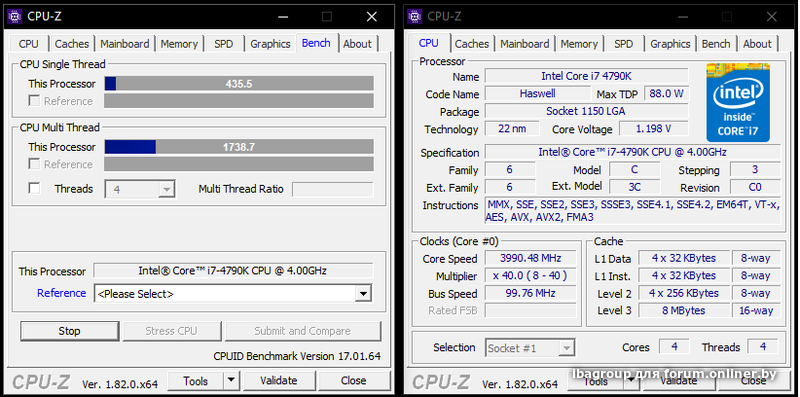 0 0 |
65 W | OEM |
The processor will launch in the Spring (March/April we think), and exact pricing is yet to be announced.
For those that have been following AMD’s V-Cache news over this past year, I bet you have exactly the same questions I did when AMD first briefed us on this announcement. Here is a summary of the questions I asked, and my interpretations of the responses.
Why only Ryzen 7, not Ryzen 5/Ryzen 9? Because this is a new project for AMD, they want to find out how a processor like this will be welcomed into the market. A lot of users (myself included) expected AMD to go all-in with a big 16-core version, however anything Ryzen 9 requires two chiplets, and adding the extra V-Cache does require an extra cost in silicon and packaging. During a semiconductor shortage, I was told that this is the best way to get it into the hands of many people while also not in the super high-cost bracket. It also means one single unified 96 MB of L3 cache, without having to deal with two chiplets worth which might not be optimized immediately. Future versions of V-Cache on next-generation products may be expanded to other Ryzen members of the family.
Future versions of V-Cache on next-generation products may be expanded to other Ryzen members of the family.
The frequencies are lower than the regular 5800X? The cache does add a few watts to the power both in terms of idle and load. Rather than bin a stricter chiplet, the decision was made to reduce the frequency a little, but still allow overclocking. The chip, while listed at 105 W, still has the 142 W package power tracking for motherboards that support it.
Who is this chip for? The focus is on users playing video games over anything else. The extra cache is meant to help with communications with discrete graphics cards, offering additional performance above the regular R7 5800X. Productivity workloads are less likely to be affected, and for those users the regular Ryzen CPUs are expected to be better. The Ryzen 7 5800X3D is designed to be the ‘World’s Fastest Gaming Processor’ (when compared to the 5900X and 12900K).
In terms of those performance metrics, AMD is quoting:
- From 1.
 0x to 1.4x at 1080p High vs Ryzen 9 5900X + RTX3080 (15% average)
0x to 1.4x at 1080p High vs Ryzen 9 5900X + RTX3080 (15% average) - From 0.98x to 1.2x at 1080p High vs Core i9-12900K (DDR5) + RTX3080
Both systems were running Windows 11.
The critical element here I think is going to be the price. As I’m writing this piece, I can find the following prices:
- Ryzen 5 5600G (6C/12T*): $240
- Ryzen 5 5600X (6C/12T): $290
- Core i5-12600K (6P+4E*): $300
- Ryzen 7 5700G (8C/16T*): $340
- Ryzen 7 5800X (8C/16T): $369
- Core i7-12700KF (8P+4E): $390
- Ryzen 9 5900X (12C/24T): $540
- Core i9-12900KF (8P+8E): $590
- Ryzen 9 5950X (16C/32T): $730
Even though AMD is promoting the Ryzen 7 5800X3D to be higher performance than the 5900X in gaming, if it goes anywhere north of $500, it might be badly received. At $500, it would be a +$130 add-on from the regular Ryzen 7 5800X. Are users willing to pay almost 30% more for triple the L3 cache for up to 15% more performance in gaming? Or is this just simply a play for the world’s fastest gaming processor, regardless of cost?
Don’t get me wrong here, I think the technology is great. But in order for AMD to keep the same margins, it might be more expensive than people think. I’m looking forward to getting it in hand for review – let us know what sort of tests you want to see.
But in order for AMD to keep the same margins, it might be more expensive than people think. I’m looking forward to getting it in hand for review – let us know what sort of tests you want to see.
Coming 2H 2022: Zen 4 on 5nm, with AM5, DDR5, and PCIe 5.0
Perhaps not that surprising given all the information from last year, AMD has confirmed that Zen 4 based Ryzen CPUs coming in 2022 will be built on TSMC’s 5nm process (we assume N5), will be built on the AM5 socket, and feature DDR5 as well as PCIe 5.0. What we get new out of this disclosure are images of the new socket, and a render of the CPU form factor.
With AM5, AMD is going to move to a Land Grid Array (LGA) style of processor, similar to Intel, eliminating the Pin Grid Array (PGA) that has been used on the current Ryzen desktop processors. AMD is no stranger to LGA, given that its EPYC enterprise processors and Threadripper processors both use it. The new AM5 socket is a 1718 pin design, with the pins in two orientations:
If this sort of socket looks familiar to any of you, it’s because it appears to be a denser version of AMD’s old socket F back in 2006-2010.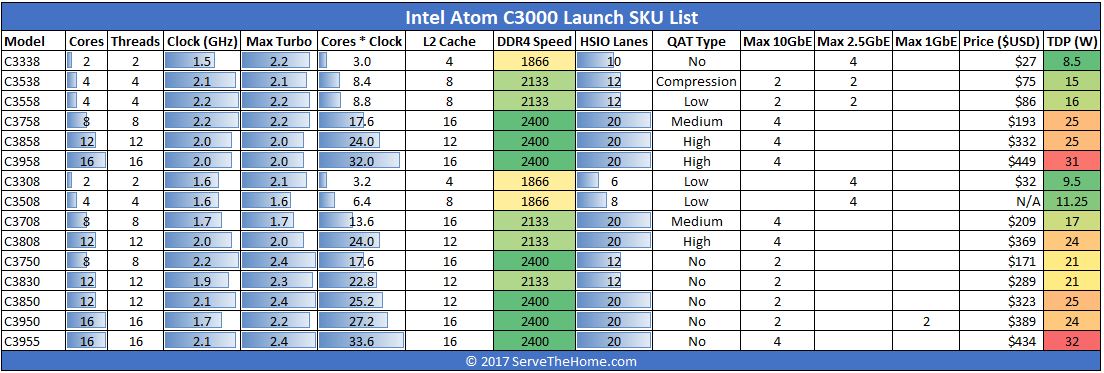 While that old socket at 1207 pins for Opteron enterprise processors, this one has 1718, so you’ll see us refer to it as LGA1718. Compared to Intel’s 12th Gen Core processors that use an LGA1700 socket, both the major platforms are around the same number of pins.
While that old socket at 1207 pins for Opteron enterprise processors, this one has 1718, so you’ll see us refer to it as LGA1718. Compared to Intel’s 12th Gen Core processors that use an LGA1700 socket, both the major platforms are around the same number of pins.
It is worth noting that this sort of socket, like the old Socket F, means that the bottom of the Zen 4 processors will be nothing but contact pads. The use of an LGA socket means the pin density is defined at the socket level, rather than on the processor, and it’s easier to design a socket with a higher pin density. But the pin-only rear means that some of the power circuitry for the chip will be both in-package and on the top, which is handy given that AMD is also showcasing what the CPU will look like.
We’ve got another square-like CPU package, however to accommodate some of that power delivery the heatspreader has this sort of octopus arm design to it. The heatspreader is not rotationally symmetric, with the top/bottom (as shown) central arms being smaller than the left/right central arms.
